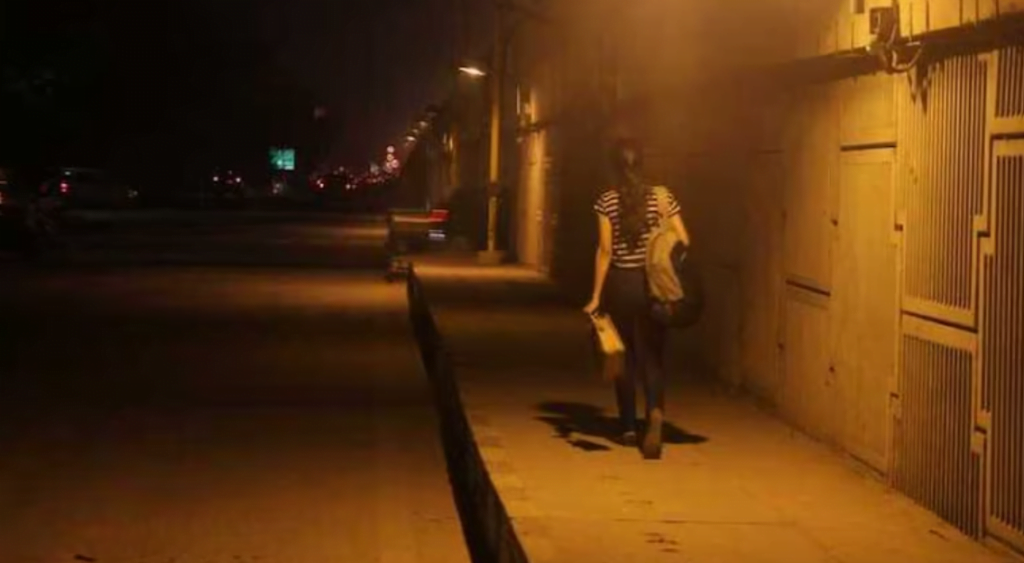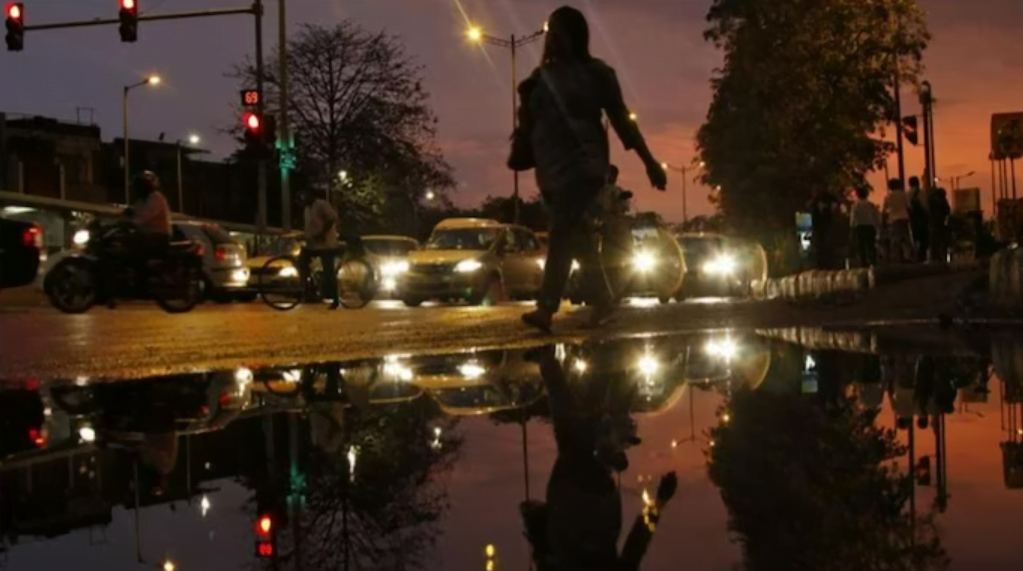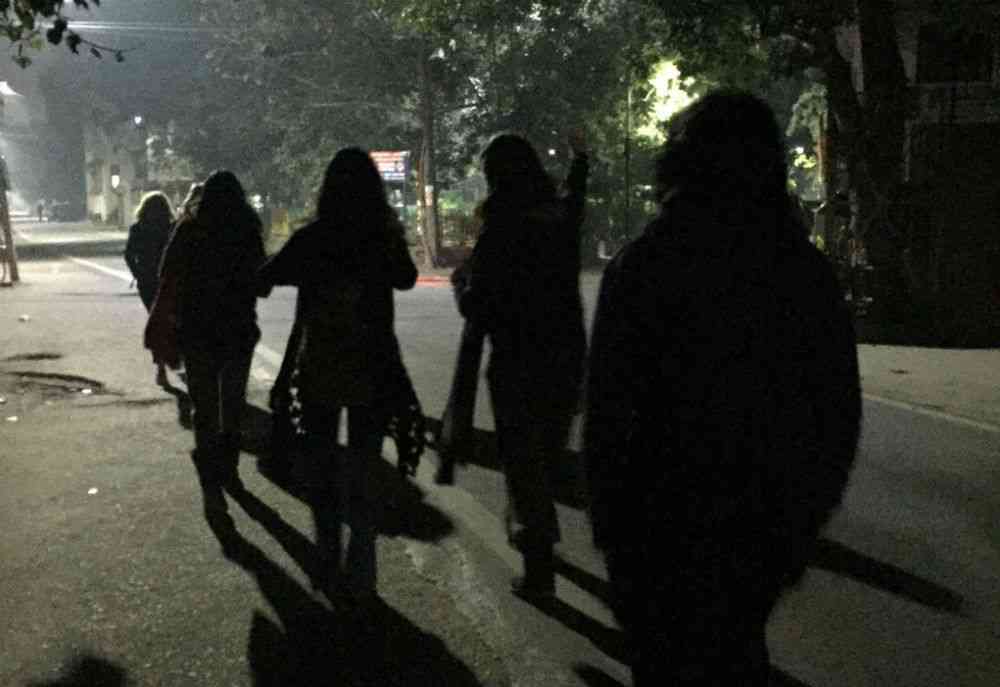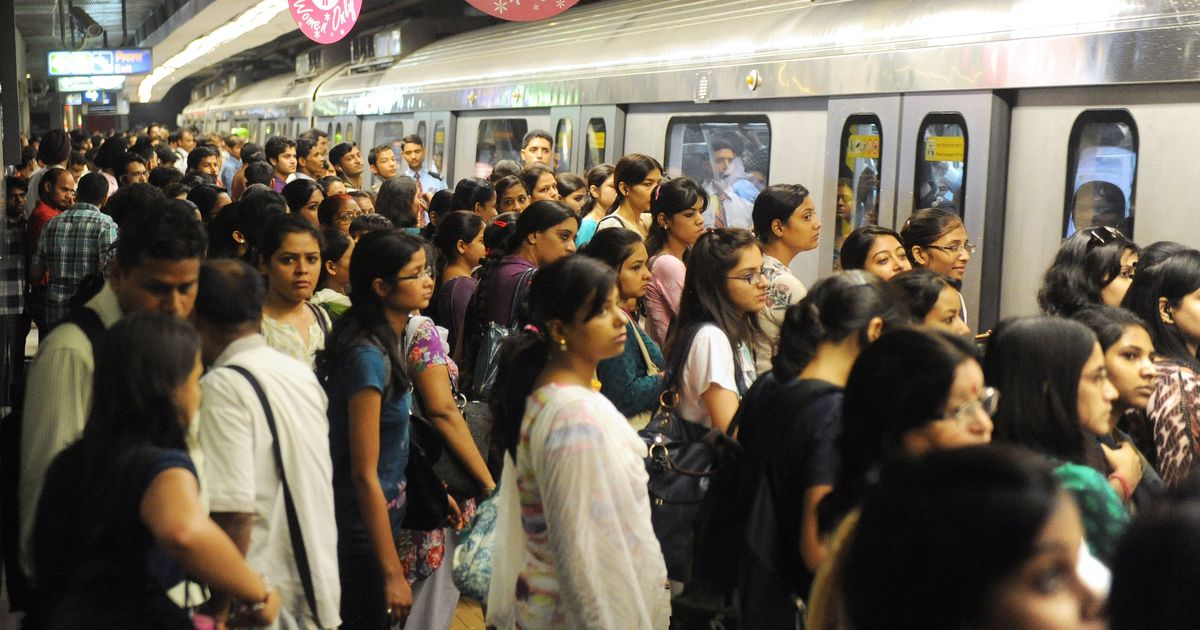A city, among the manifold luxuries and opportunities, also brings a sense of freedom to its inhabitants. The towering skyscrapers, the amorphous mass of people moving round-the-clock, the glittering cafes and shopping complexes vying for consumption, commute a tap away; all this wrapped up in a language of freedom- freedom to move, freedom to leisure, freedom to wear, freedom to be. A sense of anonymity, exploration, fun, and ownership are tied to this freedom.
However, some central questions that confront urban spaces time and again are whether this freedom is equally accessible to everyone inhabiting it. What jeopardises this freedom? Do we all gauge our risk and safety similarly when stepping out? And perhaps most importantly, who gets to be the observer, enjoyer, and wanderer in a city, and who is the spectacle constantly being observed, at best, and policed and violated, at worst?
(Mis)understanding women’s access to public space
This question stirs up a sense of resonance in many communities probably except the able-bodied upper-caste and class cis-men. Besides the conspicuous infrastructure bias that presumes such men as the ‘default,’ users of public spaces, the prevailing social norms around caste, gender, class, and disability also dictate the patterns of mobility and usage of public spaces by different sections of society.

Women, for instance, have always found it ambiguous and vulnerable to navigate certain parts of the city and at certain hours of the day. A lot of permutations and combinations involving place, time, mode of commute, clothes, distance from their residence, the person accompanying, etc go into planning except the regular pepper spray. Spaces like unlit deserted streets, liquor shops, unisex gyms, and tea-paan shops make their identity as ‘women,’ more pronounced, who by the moral sanction of the patriarchal society do not belong there.
For men, on the contrary, these moral sanctions are absent or relaxed. These are socio-political questions that cannot be bypassed with mere technical and infrastructural fixes. Consider how the advent of home delivery of alcohol and women-only liquor shops do little to question the social contempt reserved for women consuming alcohol. Most recently, NewsFirst Kannada’s videos of women outside pubs captioned like “woman pouncing on everyone,” lay bare and capitalise on this very contempt for women who defy patriarchal moral sanction.
The book Why Loiter? highlights that women, unlike men, have to produce a sense of purpose and ‘respectability,’ while accessing public space. This includes the right reason, right time, right place, right company, right clothes, to name a few. A legitimate claim to the space is conditional on their adherence to these clauses. No wonder, we find more men resting freely in public spaces whereas women are mostly found in transit.
A purposeless or unrespectable presence is akin to soliciting sexual attention which manifests in eve teasing, cat-calling, molestation, etc. Thus, at the heart of manufacturing the ‘protection-worthiness,’ of a woman in public space is her acquiescence to patriarchal dikats of a good woman.
Enveloping women’s access to public space in a language of safety and protection reproduces the same normative order which in the first place confined their movement. It pushes the binary of a good woman who is mindful of her honour vis-à-vis an indecent woman.
Unfortunately, the state responds to the violence committed against women in public places primarily and solely as a question of safety. Shilpa Phadke calls it a “discourse of sexual safety,” rooted in the preservation of sexual endogamy. The solutions offered to bolster their access to public places are therefore limited. Most of them depend on increased surveillance and creating women-exclusive spaces. CCTV is one such solution.

For instance, Delhi is one of the most surveilled cities in the world yet the crime rate against women continues to soar as indicated in the NCRB 2023 report. Moreover, CCTVs might help in the investigation rather than prevention of actual crime against women. Ideas like getting working women registered in police stations and tracking them for their safety or prohibiting late-night coaching classes for girls have also been floated. Women-only parks or ‘pink parks,’ have also made it to the list of solutions.
What these solutions fail to do is move beyond the patriarchal-protectionist notion. It still plays by the rule of policing women’s movements in public spaces and promotes the ‘othering,’ of men as the only viable solution. We need to ask what happens to women who don’t use pink parks, and who refuse to be under CCTV whenever they head out. Or what about the safety of women in the street or at the pan-shop just next to these designated places?
Reclaiming the city and self
While developing infrastructure based on women’s needs is of paramount concern, access to public spaces needs to be reimagined as a right to self-exploration, a right to observe, and a right to ‘loiter.’ Spaces are constituted by our everyday repetitive interactions within them. The gendered power relations within a space can be reconstituted and a hegemonic masculine space be dismantled by forging new forms of interactions within it.

In Kashmir in the early hours of the morning, Harrisa shops once exclusively catered to men who would bring it home for women. Sellers have now been witnessing young women stepping out and relishing the dish at the shop itself. The midnight leisure walks organised by the Women Walk at Midnight collective are another example of attempts by women at reconstituting and reclaiming ownership of public spaces.
Feminist Geographer Doreen Massey observed that controlling the spatial mobility of women is related to controlling their identity. Hence, as long as access to public spaces remains embedded in a language of safety and protection, the patriarchal virtue of “ache ghar ki ladkiyan,” who self-police themselves and play by the good-women-rulebook as they head out cannot be done away with. Dismantling this ideal is important not only for women’s better access to city space but also for reimagining their identity outside the patriarchal limitations.
References
- “The Way She Moves: Mapping the Everyday Production of Gender-Space,” by Shilpa Ranade, Economic and Political Weekly
- “Dangerous Liaisons,” by Shilpa Phadke, Economic and Political Weekly
- “Space, Place, and Gender,” by Doreen Massey, University of Minnesota Press
About the author(s)
Bhumika Pant holds a Master's in Political Science from the Delhi University. Having lived at grassroots as an SBI YFI fellow, she is interested in the lived experiences of people and their intersection with gender, technology and politics.






thank you for writing!